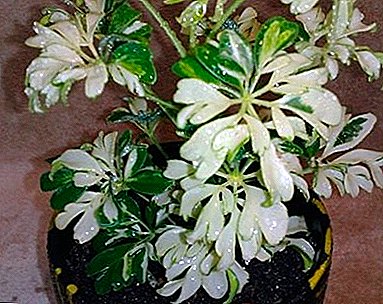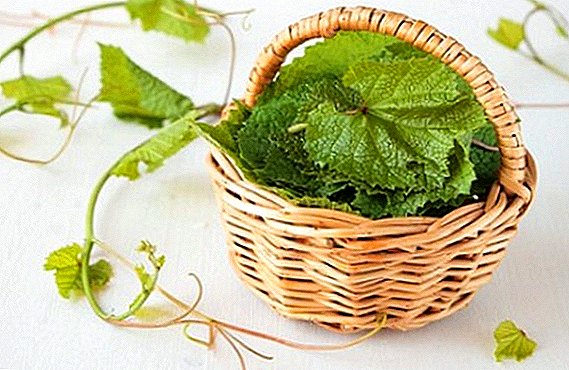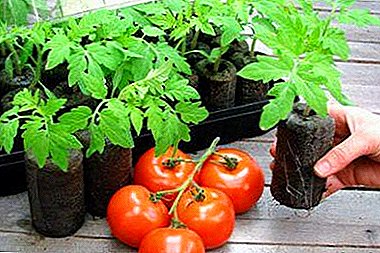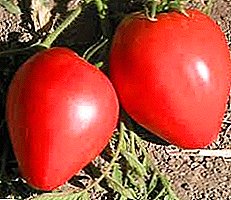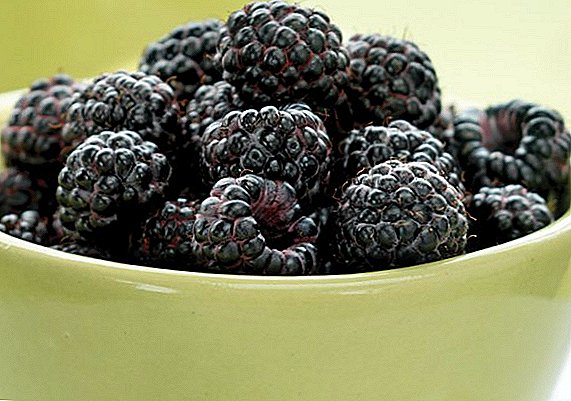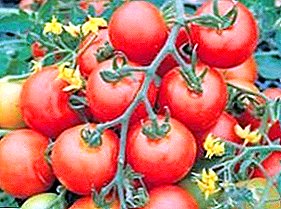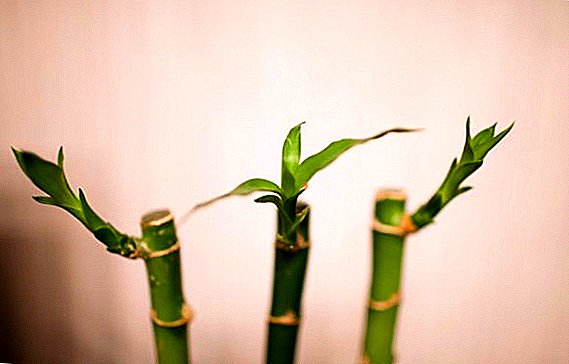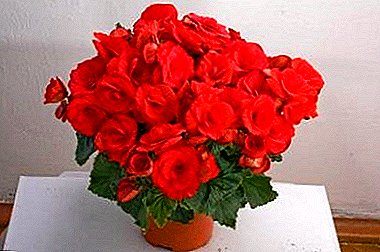
In winter, the window sills of the happy owners of flowering begonias, the elatioor, are as if illuminated by bright clusters of "roses" of all kinds of warm and even hot shades - pink, yellow, orange, red.
Such a wonderful phenomenon became possible after the crossing of the tuberous begonia - from the island of Haiti and the Socotransky begonia, which grows only in Yemen.
From the first type of begonia, the elater inherited the abundant long-lasting and bright flowering, and from the second, the dense texture of the petals and the ability to bloom in winter.
Being an artificially bred hybrid, it does not have a powerful supply of strength and requires careful handling in room culture.
Also, the plant is called begonia flowering.
A photo





How to care?
Lighting
Requires bright light without an excess of direct sunlight.
The best lighting would be windows facing east or southwest.
On the windows of the northern directions, as well as in the season of short daylight, in order to prolong flowering, it will be necessary to shine, providing 13-16 hours of daylight hours per day.
On the south and southeast side, shading is required - especially at the height of summer.
Temperature
Optimum temperature range during the whole year - from 20 to 25 degrees.
In winter, anyway, temperature should not fall below + 18ºС
Priming
 This beautiful hybrid does not impose special requirements on the soil substrate: it must be slightly acid, fairly loose, nutritious, with good air and moisture permeability.
This beautiful hybrid does not impose special requirements on the soil substrate: it must be slightly acid, fairly loose, nutritious, with good air and moisture permeability.
Can use ready soil for begonias, or garden soil with a significant dose of perlite or vermiculite, as well as prepare a mixture of four parts of leaf humus, two parts of peat and one part of coarse sand.
Landing
Container for planting may have a width equal to the height and mandatory drainage hole. Insofar as extremely dangerous stagnation of waterCapacity material is better to choose porous - ceramics without a continuous layer of glaze.
At the bottom of the container have drainage layer of small pebbles or expanded clay, then a small pile is poured over the soil, on top of which the root system is placed.
Pay special attention to the safety of earthen coma with thin and rather weak roots.
Fill the soil mixture to the desired level, gently sealing it.
Planting in open ground
In the middle lane, such a landing is carried out in early June, when the threat of night frosts recedes.
Plants are placed in 20-25 centimeters from each other.
When night temperatures drop to + 5-8ºС, these begonias transfer to the room for wintering, or they are cut from them for rooting.
Transfer
Elatior's begonias are highly sensitive to "transplant stress", therefore young specimens carefully transplanted as you grow, but mature transplanted seldom, transshipment, with the utmost attention, or replace with newgrown from cuttings.
Watering
Watered moderately in the morning or evening.
At the same time, the main goal is to prevent the soil and root system from drying out or the soil moisture stagnation.
Between irrigation with soft, not cold water, the soil should dry out significantly - at least up to half the height of the pot.
Air humidity
Summerespecially on hot days spraying is very useful.
Wherein the bush should not be lit by the sun: water droplets on leaves and petals act like lenses, concentrate sunlight and the plant gets burned.
In the autumn and winter, spraying is not carried out, since during this period, with an increase in humidity, the risk of begonia infection with fungal infections increases.
Top dressing
During flowering and active growing season fed with a mineral complex for ornamental flowering plants once a week.
Growth and pruning
 The faded begonia loses its decorative effect.
The faded begonia loses its decorative effect.
To rejuvenate her cardinal allows trimming, leaving only the "hemp" five-seven-centimeter height.
Soon from the sleeping buds new shoots will appear, which, as they grow, you need pinchto form a compact bush with dense foliage.
Bloom
To the elatior bloom continuously and abundantly, create an artificial "short day" - the duration of the daytime is reduced to 9 hourscovering the plant black plastic film.
Such a procedure carried out during two weeks, promotes the formation of buds.
To during this time, the stems are not stretched, use growth retardants or pinch shoots.
Then light day again increase to 16 hours - may need more lighting.
As a result Begonia blooms in about 2 months.
It should also be noted that a plant once faded "in full" - long, abundantly and for a long time - is restored for a long time and is unlikely to bloom again with the same intensity.
Breeding
Flower multiply vegetatively - cuttings, and individual varieties are also seeds.
Stem cuttings
 Use spring and summer cuttings about 10 cm long, on which there are a pair of leaves and two growth buds. Sections are dried.
Use spring and summer cuttings about 10 cm long, on which there are a pair of leaves and two growth buds. Sections are dried.
You can apply the pre-rooting of cuttings in water, process the lower sections with root formation stimulants, or immediately plant them in ordinary soil with additional addition of sand.
Planting cover with plastic wrap, kept warm (+22-25ºС), air and moisturize.
After the formation of the root system and the formation of new shoots (approximately during the month), the cuttings are seated in separate containers with the usual soil mixture.
Leaf cuttings
Take a large, well-formed sheet, straighten it on a hard smooth surface (on glass) and a sharp blade divided from the center into segments so that in each part was one or two vascular veins.
Spread the obtained parts on the soil surface (you can slightly lower the lower ends), moisten, cover with plastic wrap, moisten, air and contain at a temperature of 20-22 degrees.
Within a month begonia will be revived even with such a "dismemberment" and forms small new leaves in the field of cut veins.
Seeds
Some varieties Elatior, for example, a group of F1 hybrids, can be propagated by seed, and throughout the year (autumn and winter need more lighting).
Small seeds are placed on the surface of the soil mixture, sprayed with water, covered with plastic film, aerated, kept at 25-27ºС and good lighting.
Shoots appear after 2-3 weeks.
After formation two or three true leaves seedlings dive carefully reduce the temperature to 18-20ºС and limit watering.
As they grow, they are seated.
To further stimulate the formation of buds on young plants, use the "black package" method, described in the section "Flowering".
Signs of trouble

- The leaves turn pale, shoots stretch - the result of insufficient illumination, especially in winter. It is necessary to provide the optimum light mode, to arrange the lighting in the period of a short daylight hours.
- Buds fall, leaves dry - dry air and overheating. Exposure to direct sunlight should be limited and air should be humidified.
- The leaves brighten, dry brown spots appear on them, the buds and flowers become smaller - an excess of direct sunlight. Need to pritenit plant.
Diseases and pests
Mistakes of care, first of all, stagnation or lack of moisture in the soil, weaken the plant and provoke its defeat. powdery mildew. In this case, you need to optimize watering and process the begonia. fungicides.
The combination of high humidity and low temperature leads to the development root or leaf rot. If the process has just begun, you should immediately optimize the temperature and humidity conditions and remove the damaged parts. In the case of a strong defeat, you will have to root the cuttings, cut from healthy shoots, and keep them in appropriate conditions, and get rid of the rest of the plant.
Begonia can attack spider mite, aphid, scythe, thrips and mealybug. As a first measure, the use of insect removal using a cotton wool moistened with alcohol, or treatment with a soap solution. The most effective pest remedy - systemic insecticides.
Begonia Elatior - a wonderful hybrid of two geographically distant "parents" - is extremely decorative during the period of abundant long-term flowering, exciting and winter time. At the end of this floral "firework", having neither tuberous, nor bulbous "reserve of forces", the plant most often comes to its senses for a long time.
However, being propagated by cuttings or seeds, begonia elatio gives life to young plants that are able to repeat the same feat of flowering.


